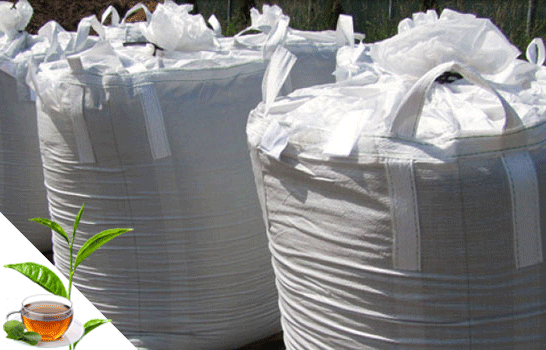Harvesting
The first step of the manufacturing process starts with tea plucking. The fresh young shoots are harvested from mature tea bushes. In the plucking process tender and succulent fresh growth “two leaves and a bud’ of the tea bush is nimbly plucked by the skilled female employees. The correct maturity to manufacture the highest quality tea, the plucked leaves must comprise of an unfurled bud with two or three soft leaves.
The green leaf harvested during the morning hours is packed in plastic boxes to prevent post harvest damage and transported to the factory before 12 noon and the afternoon harvest by late evening before 6 pm.


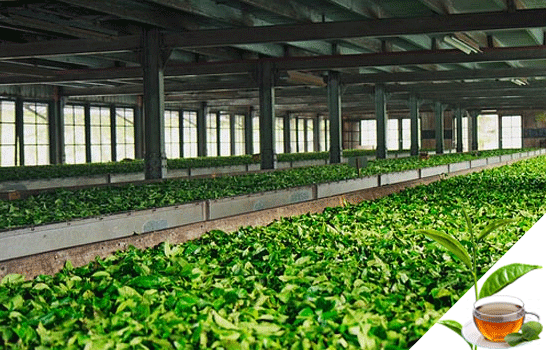
Withering
The transported tea is, after weighing, shifted in to troughs for withering. The leaves are withered so that the moisture content is reduced to 55-58% and chemical changes are taken place in the leaves which results expected taste and aroma of made tea.
During the withering tea leaves are spread out evenly in troughs that have fine meshed netting at the bottom, enabling the flow of air though the leaves. Withering is conducted with ambient air and controlled heating using the ventilating equipment.
The process will take about 12 – 18 hours and at the end the leaves conditions become limp and flaccid, suitable for rolling.

Rolling
The next stage of the manufacturing process is rolling. Leaves are rolled in rolling machines giving desired pressure and duration. The aim of the rolling process is to twist the leaves through a mechanical process, in order to rupture the cells and release enzymes.
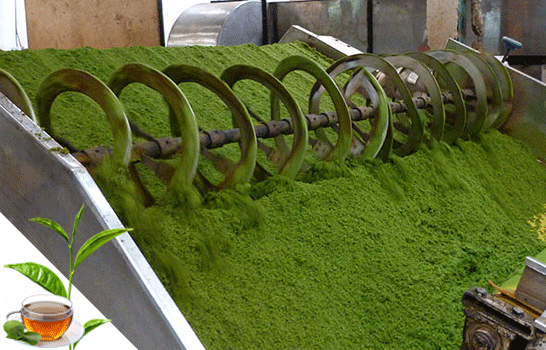

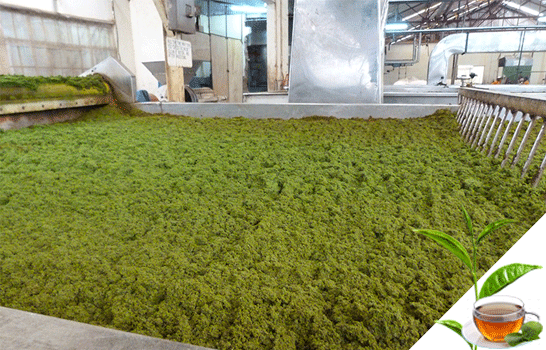
Fermentation
Fermentation or oxidization is the most important stage in tea manufacture process that directly affects the taste of the end product. Large chemical changes occur here; fermentation is carried out in custom-designed fermentation rooms with a temperature between 24-27 °C and a humidity of 90 per cent. Depending on the conditions & the style of tea desired, the fermentation time range from 1-5 hours.

Drying
After the optimum fermentation is taken place, the leaf are transferred for drying through a firing chamber at inlet air temperature of 88 – 91 c and exhaust air temperature of 52 – 57 Cin
Firing process halts the fermentation as it destroys the enzymes by subjecting the leaves to a current of hot air and gives the characteristic darkness of the tea.
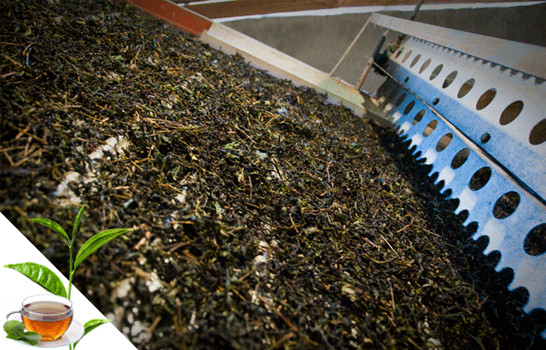

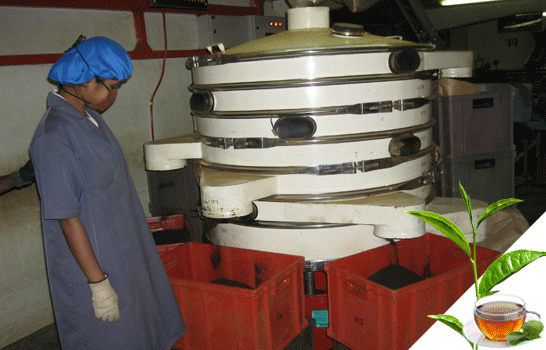
Grading
Firstly, the dried tea is sorted into different grades, by passing it over a series of vibrating screens of different mesh sizes. The passage of teas through this system gives a number of grades with more or less evenly sized particles. These grades fall into four main groups, namely, leaf, brokens, fannings and dust in descending order of particle size.
Then, it is passed through a machine known as a color separator, which differentiates the tea from the other objects, such as twigs.

Packaging
After sifting and color sorting the tea is ready for packing. Food grade aluminum lined paper sacks are used for bulk packing.
